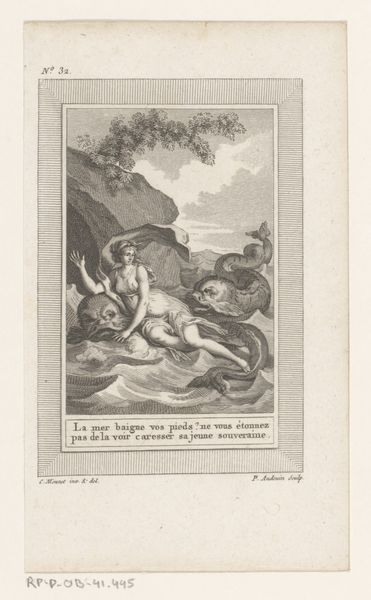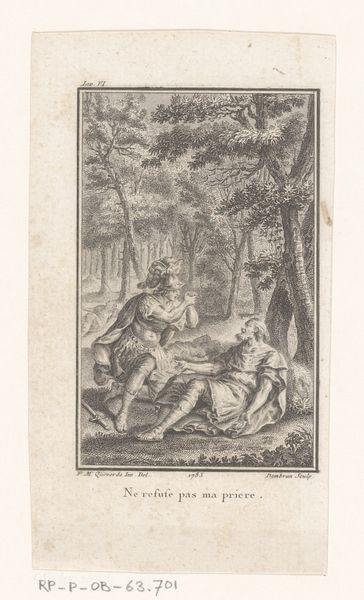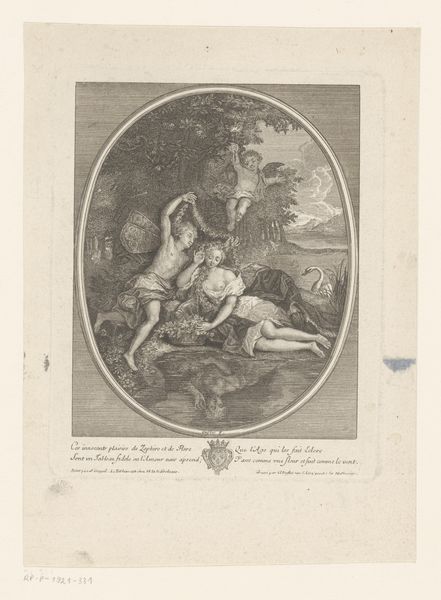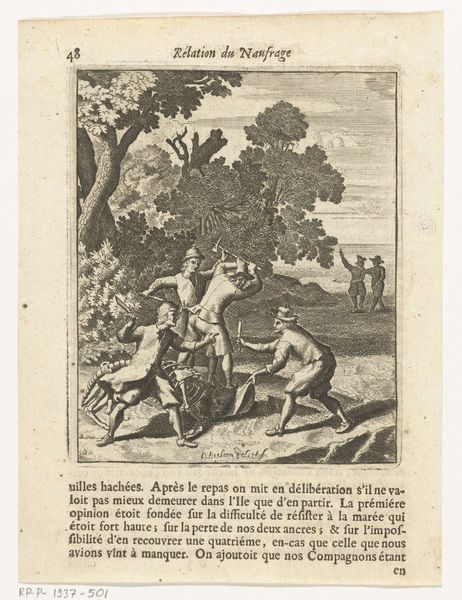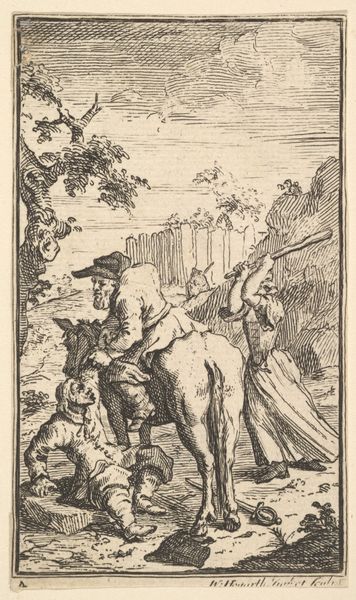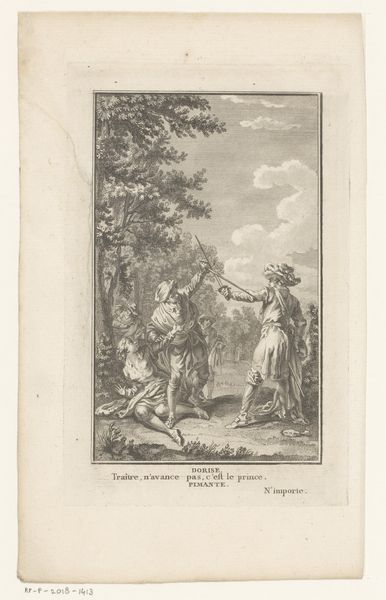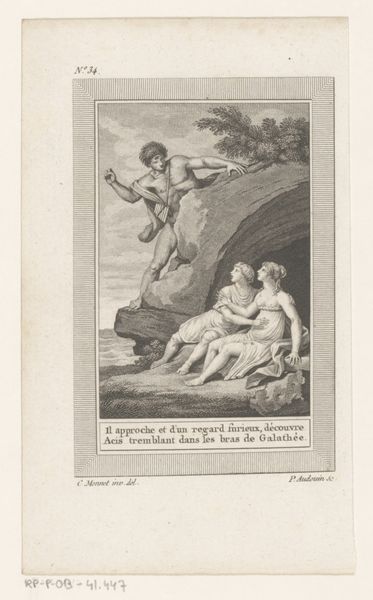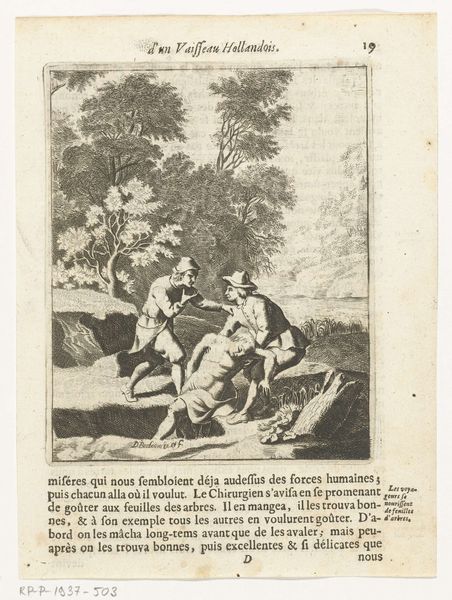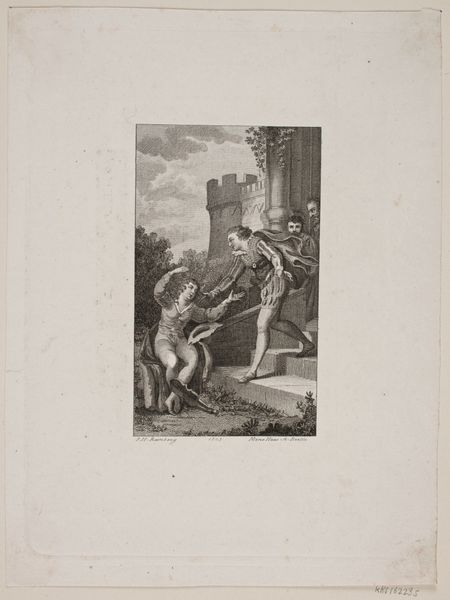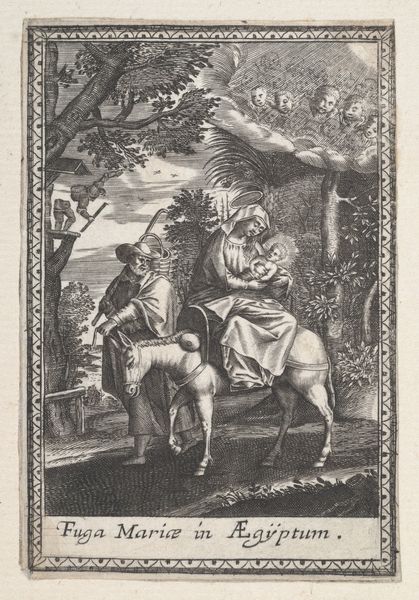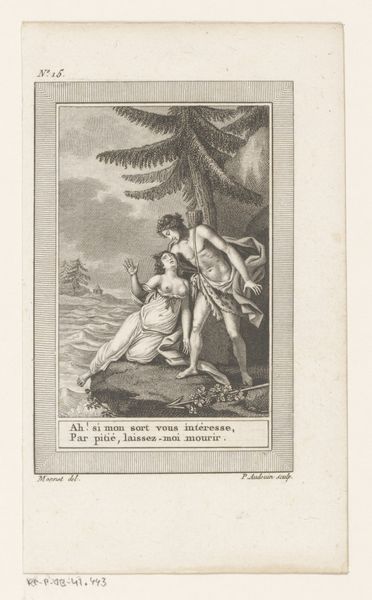
print, etching, paper, ink, engraving
#
portrait
#
neoclacissism
#
narrative-art
#
ink paper printed
# print
#
etching
#
old engraving style
#
figuration
#
paper
#
ink
#
line
#
history-painting
#
engraving
Dimensions: height 155 mm, width 89 mm
Copyright: Rijks Museum: Open Domain
Curator: This image is entitled "Thisbe werpt zich op het zwaard naast het lichaam van Pyramus," or "Thisbe throws herself on the sword beside the body of Pyramus". It's an etching done in 1801 by Pierre Audouin, currently held at the Rijksmuseum. Editor: What strikes me immediately is the starkness. The clear, definite lines etched into paper. There’s very little gradation of tone, making the scene feel theatrical, posed. Curator: Precisely. Consider the choice of materials here: Audouin opted for engraving and etching, which, while allowing for precision, inherently lend themselves to replication. Prints like these were relatively accessible; not intended for wealthy elites, but for a broader educated public familiar with classical narratives. It makes one think about democratized art, or maybe, more bluntly, art's commercialisation in the period. Editor: Right. But those lines, so economically drawn, speak volumes. Look at how little hatching he uses to define the grief on Thisbe's face, or the limpness of Pyramus' body. These minimal touches powerfully evoke the tragedy of the lovers. And you have to think about the tradition it’s working within—a very deliberate adoption of neoclassicism, that sought a kind of visual and moral clarity based on presumed ancient virtues. Curator: Symbols work diligently here: The sword, of course, is phallic. Then note the lone tree against the landscape, reaching with longing, acting as a potent, familiar marker of unfulfilled promise. Think also of the cultural resonance of doomed love—from Shakespeare to popular songs, there’s an inexhaustible fascination with these tragic pairings. Does that resonate, even today? Editor: It does. To circle back to the physical production, I am keen to explore how engravings served as prototypes for reproductive technologies to come. Even photography owes a great deal to earlier experiments in mark-making and duplication. But yes, to the core: Audouin’s material choices certainly shape our understanding of the content. The ease of production enables mass accessibility, allowing an image steeped in moral, sexual and societal mores to spread amongst a populace on the cusp of seismic political changes. Curator: That interplay between craft and meaning remains endlessly captivating. Editor: Indeed. A bittersweet reminder that even the most reproducible art is born of intensely human skill, ideas, and stories.
Comments
No comments
Be the first to comment and join the conversation on the ultimate creative platform.
